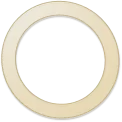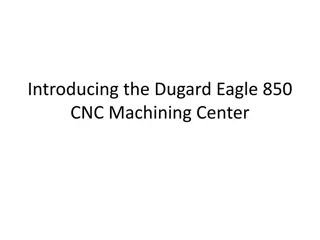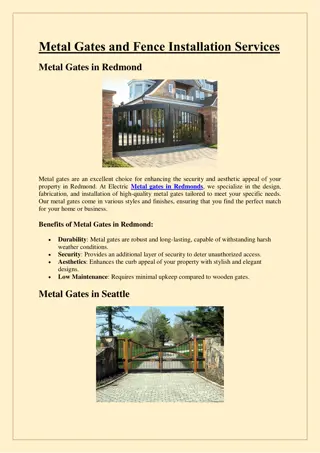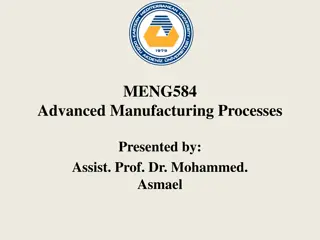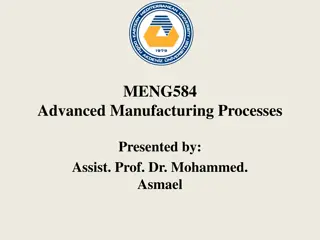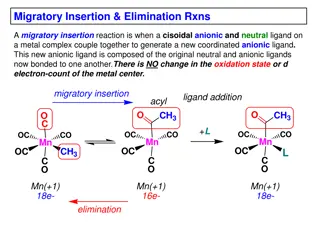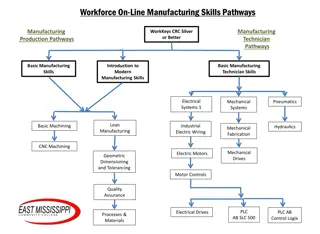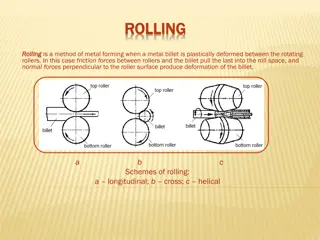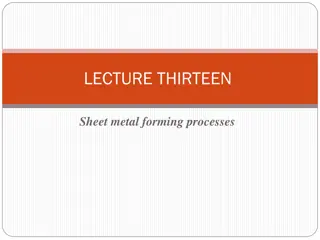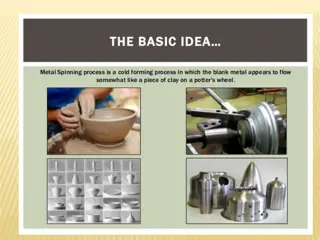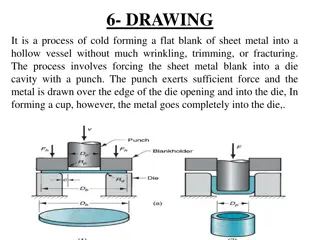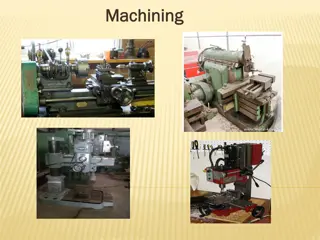Introduction to Metal Machining Processes
Metal machining is a vital part of manufacturing, involving processes like turning, milling, and drilling. It encompasses chip formation theory, force relationships, and energy considerations. While machining offers precision and versatility in shaping materials, it has drawbacks such as material wastage and time consumption compared to other methods like casting. Understanding the importance and disadvantages of machining, as well as its role in the manufacturing sequence, is key to optimizing production outcomes.
Download Presentation

Please find below an Image/Link to download the presentation.
The content on the website is provided AS IS for your information and personal use only. It may not be sold, licensed, or shared on other websites without obtaining consent from the author.If you encounter any issues during the download, it is possible that the publisher has removed the file from their server.
You are allowed to download the files provided on this website for personal or commercial use, subject to the condition that they are used lawfully. All files are the property of their respective owners.
The content on the website is provided AS IS for your information and personal use only. It may not be sold, licensed, or shared on other websites without obtaining consent from the author.
E N D
Presentation Transcript
THEORY OF METAL MACHINING Overview of Machining Technology Theory of Chip Formation in Metal Machining Force Relationships and the Merchant Equation Power and Energy Relationships in Machining Cutting Temperature I
Material Removal Processes A family of shaping operations, the common feature of which is removal of material from a starting workpart so the remaining part has the desired shape Categories: Machining material removal by a sharp cutting tool, e.g., turning, milling, drilling Abrasive processes material removal by hard, abrasive particles, e.g., grinding Nontraditional processes - various energy forms other than sharp cutting tool to remove material I
Machining Cutting action involves shear deformation of work material to form a chip . As chip is removed, a new surface is exposed Figure 21.2 - (a) A cross-sectional view of the machining process, (b) tool with negative rake angle; compare with positive rake angle in (a) I
Why Machining is Important Variety of work materials can be machined Most frequently applied to metals Variety of part shapes and special geometry features possible, such as: Screw threads Accurate round holes Very straight edges and surfaces Good dimensional accuracy and surface finish I
Disadvantages with Machining Wasteful of material Chips generated in machining are wasted material, at least in the unit operation Time consuming A machining operation generally takes more time to shape a given part than alternative shaping processes, such as casting, powder metallurgy, or forming I
Machining in the Manufacturing Sequence Generally performed after other manufacturing processes, such as casting, forging, and bar drawing Other processes create the general shape of the starting workpart Machining provides the final shape, dimensions, finish, and special geometric details that other processes cannot create I
Machining Operations Most important machining operations: Turning Drilling Milling Other machining operations: Shaping and planing Broaching Sawing I
Turning Single point cutting tool removes material from a rotating workpiece to form a cylindrical shape Figure 21.3 (a) turning I
Drilling Used to create a round hole, usually by means of a rotating tool (drill bit) that has two cutting edges Figure 21.3 - The three most common types of machining process: (b) drilling I
Milling Rotating multiple-cutting-edge tool is moved slowly relative to work to generate plane or straight surface Two forms: peripheral milling and face milling Figure 21.3 - (c) peripheral milling, and (d) face milling I
Cutting Tool Classification 1. Single-Point Tools One cutting edge Turning uses single point tools Point is usually rounded to form a nose radius 2. Multiple Cutting Edge Tools More than one cutting edge Motion relative to work usually achieved by rotating Drilling and milling use rotating multiple cutting edge tools. I
Figure 21.4 - (a) A single-point tool showing rake face, flank, and tool point; and (b) a helical milling cutter, representative of tools with multiple cutting edges I
Cutting Conditions in Machining The three dimensions of a machining process: Cutting speed v primary motion Feed f secondary motion Depth of cut d penetration of tool below original work surface For certain operations, material removal rate can be found as MRR = v f d where v = cutting speed; f = feed; d = depth of cut I
Cutting Conditions for Turning Figure 21.5 - Cutting speed, feed, and depth of cut for a turning operation I
Roughing vs. Finishing in Machining In production, several roughing cuts are usually taken on the part, followed by one or two finishing cuts Roughing - removes large amounts of material from the starting workpart Creates shape close to desired geometry, but leaves some material for finish cutting High feeds and depths, low speeds Finishing - completes part geometry Achieves final dimensions, tolerances, and finish Low feeds and depths, high cutting speeds I
Machine Tools A power-driven machine that performs a machining operation, including grinding Functions in machining: Holds workpart Positions tool relative to work Provides power at speed, feed, and depth that have been set The term is also applied to machines that perform metal forming operations I
Orthogonal Cutting Model A simplified 2-D model of machining that describes the mechanics of machining fairly accurately Figure 21.6 - Orthogonal cutting: (a) as a three-dimensional process I
Chip Thickness Ratio t o r = t c where r = chip thickness ratio; to = thickness of the chip prior to chip formation; And tc= chip thickness after separation Chip thickness after cut is always greater than before, so chip ratio is always less than 1.0 I
Determining Shear Plane Angle Based on the geometric parameters of the orthogonal model, the shear plane angle can be determined as: r cos r =1 tan sin where r = chip ratio, and = rake angle I
Figure 21.7 - Shear strain during chip formation: (a) chip formation depicted as a series of parallel plates sliding relative to each other, (b) one of the plates isolated to show shear strain, and (c) shear strain triangle used to derive strain equation I
Shear Strain Shear strain in machining can be computed from the following equation, based on the preceding parallel plate model: = tan( - ) + cot where = shear strain, = shear plane angle, and = rake angle of cutting tool I
Figure 21.8 - More realistic view of chip formation, showing shear zone rather than shear plane. Also shown is the secondary shear zone resulting from tool-chip friction I
Four Basic Types of Chip in Machining 1. Discontinuous chip 2. Continuous chip 3. Continuous chip with Built-up Edge (BUE) 4. Serrated chip I
Segmented Chip Brittle work materials (e.g., cast irons) Low cutting speeds Large feed and depth of cut High tool-chip friction Figure 21.9 - Four types of chip formation in metal cutting: (a) segmented I
Continuous Chip Ductile work materials (e.g., low carbon steel) High cutting speeds Small feeds and depths Sharp cutting edge on the tool Low tool-chip friction Figure 21.9 - Four types of chip formation in metal cutting: (b) continuous I
Continuous with BUE Ductile materials Low-to-medium cutting speeds Tool-chip friction causes portions of chip to adhere to rake face BUE formation is cyclical; it forms, then breaks off Figure 21.9 - Four types of chip formation in metal cutting: (c) continuous with built-up edge I
Serrated Chip Semicontinuous - saw- tooth appearance Cyclical chip formation of alternating high shear strain then low shear strain Most closely associated with difficult-to- machine metals at high cutting speeds Figure 21.9 - Four types of chip formation in metal cutting: (d) serrated I
Forces Acting on Chip Friction forceF and Normal force to frictionN Shear forceFs and Normal force to shearFn Figure 21.10 - Forces in metal cutting: (a) forces acting on the chip in orthogonal cutting I
Resultant Forces Vector addition of F and N = resultant R Vector addition of Fs and Fn = resultant R' Forces acting on the chip must be in balance: R' must be equal in magnitude to R R must be opposite in direction to R R must be collinear with R I
Coefficient of Friction Coefficient of friction between tool and chip: F = N Friction angle related to coefficient of friction as follows: = tan I
Shear Stress Shear stress acting along the shear plane: F S = s A s where As = area of the shear plane t w o s= A sin Shear stress = shear strength of work material during cutting I
Cutting Force and Thrust Force Forces F, N, Fs, and Fn cannot be directly measured Forces acting on the tool that can be measured: Cutting forceFc and Thrust forceFt Figure 21.10 - Forces in metal cutting: (b) forces acting on the tool that can be measured I
Forces in Metal Cutting Equations can be derived to relate the forces that cannot be measured to the forces that can be measured: F = Fc sin + Ft cos N = Fc cos - Ft sin Fs = Fc cos - Ft sin Fn = Fc sin + Ft cos Based on these calculated force, shear stress and coefficient of friction can be determined I
The Merchant Equation Of all the possible angles at which shear deformation could occur, the work material will select a shear plane angle which minimizes energy, given by 45 + = 2 2 Derived by Eugene Merchant Based on orthogonal cutting, but validity extends to 3-D machining I
What the Merchant Equation Tells Us = + 45 2 2 To increase shear plane angle Increase the rake angle Reduce the friction angle (or coefficient of friction) I
Higher shear plane angle means smaller shear plane which means lower shear force Result: lower cutting forces, power, temperature, all of which mean easier machining Figure 21.12 - Effect of shear plane angle : (a) higher with a resulting lower shear plane area; (b) smaller with a corresponding larger shear plane area. Note that the rake angle is larger in (a), which tends to increase shear angle according to the Merchant equation I
TMC 40
Power and Energy Relationships A machining operation requires power The power to perform machining can be computed from: Pc = Fc v where Pc = cutting power; Fc = cutting force; and v = cutting speed I
Power and Energy Relationships In U.S. customary units, power is traditional expressed as horsepower (dividing ft-lb/min by 33,000) F v c c= HP 33, 000 where HPc = cutting horsepower, hp I
Power and Energy Relationships Gross power to operate the machine tool Pg or HPg is given by P P HP HP c c g= g= E or E where E = mechanical efficiency of machine tool Typical E for machine tools = 90% I
Unit Power in Machining Useful to convert power into power per unit volume rate of metal cut Called the unit power, Pu or unit horsepower, HPu P HP c c u= u= P HP or MRR MRR where MRR = material removal rate I
Specific Energy in Machining Unit power is also known as the specificenergyU P F v F c c c = = = = U P u MRR vt w t w o o Units for specific energy are typically N-m/mm3 or J/mm3 (in-lb/in3) I
Cutting Temperature Approximately 98% of the energy in machining is converted into heat This can cause temperatures to be very high at the tool-chip The remaining energy (about 2%) is retained as elastic energy in the chip I
Cutting Temperature Several analytical methods to calculate cutting temperature Method by N. Cook derived from dimensional analysis using experimental data for various work materials 4 0 . C . 0 333 vt U o = T K where T = temperature rise at tool-chip interface; U = specific energy; v = cutting speed; to = chip thickness before cut; C = volumetric specific heat of work material; K = thermal diffusivity of the work material I
Cutting Temperature Experimental methods can be used to measure temperatures in machining Most frequently used technique is the tool-chip thermocouple Using this method, K. Trigger determined the speed-temperature relationship to be of the form: T = K vm where T = measured tool-chip interface temperature I
Metal Cutting theory Plastically deform a material using a hard tool in order to obtain desired physical shape and properties Very complex phenomena Essential for high precision; high performance products I




